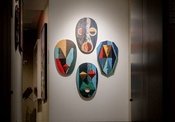IAI and online via Webex
Inclusion and diversity have marked the demands of social movements in the 21st century. With the concept intersectionality, inspired by feminist movements in the US, the academic field aims to understand how various interdependent conditions of oppression and inequality–class, gender, religion, ethnicity, skin colour, citizenship, migration, geography, and language–are reflected in exclusion, but also in the articulation of differentiated demands and struggles. Much less visible have been the voices of academics and activists from Latin America, who have both made perceivable and conceptualized social and political exclusion from the peripheries.
This series of public lectures «Diversity/Medialities» organized by the Ibero-Amerikanisches Institut and Mecila, focuses on these voices from the margins, their long-term conceptual and epistemological frameworks, and their forms and media of circulation and entanglements. With the first focus on feminist and LGTBIQ movements and ideas we invite experts and activists analysing South-North interconnections in the struggles for the rights of women and LGTBIQ groups in Latin America.
Flyer Lecture Series «Diversity/Medialities»

© Melissa Blackall
Programme
12, March 2024- 18h (CET) | Cary Aileen García Yero
In the 1990s, Cuban art historian Gerardo Mosquera had already noted that Cuban visual arts suffered from being “Eurocentric”. Since then, the art schools, institutional archives, and the histories that are written from them about the island’s visual arts have often continued to prioritize white-identified artists and artistic production that follows Western art interests and conventions. In her presentation, Cary Aileen García Yero (Harvard University / Alexander von Humboldt Postdoctoral Fellow) looks at visual arts since the 1940s and presents how the narrative of the traditional canon radically changes when we rewrite the history of Cuban arts grounded on the artistic output of Afro-Cuban artists: who the revolutionary artists are, what counts as new Cuban art, what chronologies are observed, what art communities matter, what motivates the output, among other issues.
Moderation: Clara Ruvituso (Ibero-Amerikanisches Institut / Mecila)
Participate online.